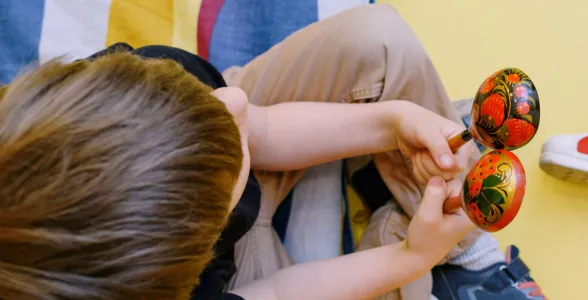
Digital Accessibility Tips
A few weeks ago, we shared our Digital Accessibility Journey; the steps we have taken recently to improve digital accessibility and our plans for further changes.
We are very much, not 'experts' when it comes to this subject and we are eager to hear from other organisations and affected people on how we can improve.
We will use this page to collate any tips, recommendations and resources we have found so that we can all learn together.
Digital Accessibility Tips, Recommendations, Resources
The following tips/recommendations are from the RNIB a charity committed to helping blind and partially sighted people:
- Make sure videos are audio-led as well as audio described. They say 'For example, if the main message is in cool graphics, it's not necessarily accessible for everyone.' Find out more in their post here.
- Caption your videos. They say 'It's not just for deaf or hard of hearing people. Many people find captions helpful. Closed captions can be resized or turned on/off. Open captions are always visible.' Find out more in their post here.
- Add image descriptions to your posts. They say 'Image descriptions make social media more accessible for blind and partially sighted people. And they only take a moment.' Find out more in their post here.
The RNIB also recently put together a guide for Charity Comms, which you can read here.
The following tips were shared by Holly Tuke about using Threads on her LinkedIn page and she has given us permission to share them here. (Holly is @lifeofablindgirl on Instagram and her website is: https://lifeofablindgirl.com).
- Add alt text to your images - Alt text is a written description of an image, making it accessible to blind and partially sighted people. Describe the key detail. If there’s text in the image, write it all out in the alt text. Alt text shouldn’t be used for inside jokes, photo credits, a sneaky way of extending your copy, or anything else that doesn’t serve the intended purpose of accessibility. On the topic of alt text, don’t forget to describe your memes and gifs! No one should be excluded from the joke. Alt-text sadly isn’t switched on by default [on threads], so head to settings, account, accessibility, and toggle on the “show alt text button”. An alt text label will then appear on images that have alt text.
- Caption your videos before uploading - There’s currently no option to add captions to videos within the [Threads] app itself, so you need to caption them beforehand. There are lots of free tools out there that are easy to use.
- Limit emojis to one or two per post and put them at the end - I’m sure you’ve seen the trend where brands are filling the entire 500 characters with a block of emojis. They’re a nightmare for screen reader users. Please stop. You don’t need more than one or two per post. Put them at the end to avoid any confusion.
- Don’t use emojis as bullet points - It can be confusing and annoying for screen reader users. Your intended message might also get lost.
- Avoid using fancy fonts - You might think they’ll make your post stand out, but they aren’t accessible. Not only are they extremely hard to read, they’re also not accessible for screen reader users.
The following list showcases links to a few people and organisations who are doing great work in the digital accessibility field:
- Beautifully Accessible
- iUX | Inclusive Design
- we're all human
- Accessibility & Inclusive Design Mentor | Mina
- Inclusion + Accessibility Specialist | Shani Dhanda
- Amy Francis-Smith
- Catarina Rivera, MSEd, MPH | Public Speaker
- Purple Goat | Inclusive Marketing Agency
If you have any digital accessibility tips that you would like to share, please do email our Communications Lead, Katie and we will add them to this page.
Support our Work
Help us to provide Music Therapy to the most vulnerable and isolated members of our society
Donate here

.webp)


.png)